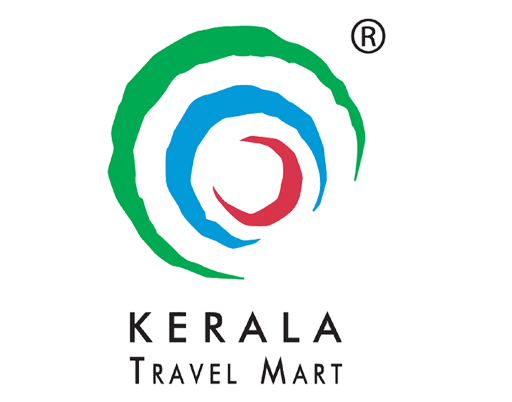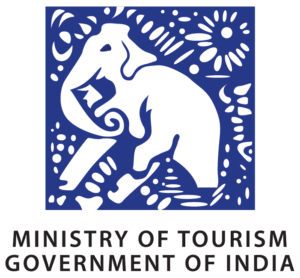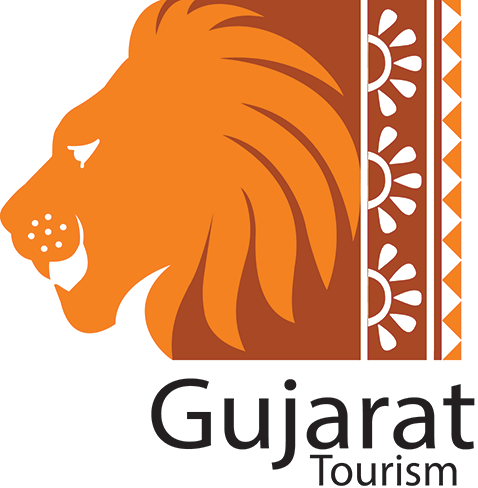TRAVEL TIPS
Useful tips for travelling in India (or in neighbouring countries)
...especially for a first stay.
1. Formalities (for visitors from the E.U.)
A visa is required to travel to India. Your passport must be valid for at least 6 months after your return date and have 3 blank pages (2 facing each other). You must have a return flight ticket.
This must be done before you travel.
Do not attempt to arrive in India without this visa, as you will inevitably be turned away.
There are different types of tourist visas:
● The e-Visa: the simplest, quick, rather easy, multi-entry, valid for up to 90 days. If you do it yourself, it costs US$80 (since June 2018).
The whole procedure, including payment, can be done online at indianvisaonline.gov.in (official website of the Indian government).
The e-Visa allows travellers to enter the country via 24 airports and three seaports.
You can apply for an e-visa at https://indianvisaonline.gov.in/visa/index.html#
Beware of "fake" websites: a website without a .gov extension is not an official website.
In the end, all these steps and the form in English are sources of error and complications. In order to facilitate your steps, IWM / MATHEW VOYAGES PVT LTD can carry out the application of the e-tourist visa for you and with you.
● The "classic" visa. Essential:
If you stay more than two months in India, enter by land or enter the country more than three times. It is valid for 3 months, 6 months or 1 year from the date of issue. It can be single, double or multiple entry. Each stay cannot exceed 90 days. This visa costs 105 € (95 € consular fees + 3 € tax + 7 € fees).
The classic visa application is made at any VFS Global office in Europe or elsewhere. Rates and conditions are subject to change, so please contact us for the latest information.
● There are also more specialised visas: professional, "journalists"...
And also special visas for certain regions (Sikkim, Andaman and Nicobar Islands,...)
Finally, a trip to Nepal, Bhutan or Sri Lanka requires another visa (or an E.T.A) for these countries.
Visa fees and conditions may change without notice and it is advisable to check with the VFS office or the website indianvisaonline.gov.in that this information is not changing.
A good idea is to make a photocopy of your passport and keep it or give it to someone travelling with you, or scan your passport and send it to yourself by email. If your passport is lost or stolen, this would make it easier to get a new one.
2. Insurance
Before you travel to India (and anywhere else in the world) you should consider taking out insurance or checking your insurance cover. You probably have assistance insurance with your family insurance (home insurance,...) or with your bank card. The best thing to do is to read your contract again: on the card websites (Visa, Mastercard, etc.) you can download the notice. Study it carefully and pay attention. The insurance linked to bank cards has a very limited amount for medical expenses, repatriation, etc... It is sometimes better to take out specialised insurance, to compare the benefits and especially the amount of reimbursement or cover for medical expenses. Indeed, in case of an accident, some medical establishments may ask you to provide proof before taking care of you; similarly, in case of an accident in Nepal, for example, the intervention of a helicopter will not be free.
LIAM / MATHEW VOYAGES PVT LTD, concerned about your peace of mind, can advise you or offer you insurance to facilitate your trip.
Once you are in India, LIAM will take care of all the essential procedures with the insurers or the health services in order to facilitate your stay, especially in case of emergency.
3. Health - vaccinations
There are no compulsory vaccinations for India, but it is important to be up to date with the usual vaccinations: diphtheria, tetanus, polio, whooping cough, hepatitis B. And be sure to check that you are up to date for measles, mumps and rubella (MMR). The hepatitis A vaccine is recommended if you stay in a rural area for a long time.
Do not drink any uncontrolled water and avoid ice cubes and straws (if they are repeatedly used, rinsed and reused), raw vegetables and unwashed fruit, unpasteurised milk and its derivatives and any product that may have been frozen. The vegetarian option also reduces the risk.
Brushing your teeth using bottled water is strongly recommended.
Remember to wash your hands often. A bottle of antibacterial gel can also be provided.
Avoid roadside restaurants, as the food may not have been kept in optimal hygienic conditions (power failure = cold chain broken) but restaurants in major cities used by international customers are not affected by these restrictions.
Of course, LIAM / MATHEW VOYAGES PVT LTD, with its knowledge of the field, offers in its travel programmes high quality restaurants to taste Indian cuisine in complete safety.
4. When to go? The weather and what to wear
India is a huge country and logically, the climate in the foothills of the Himalayas, such as Ladakh, or in the deserts of Rajasthan, has nothing in common with that of the south, such as in Kerala or Tamil Nadu. Although the best time to visit most of the country is between October and March due to the monsoon rains, the rest of the year is a good time to go to the Himalayas: Ladakh, Nepal or Bhutan for example. The best thing to do is to find out about the climate of the region you want to visit so that you can enjoy the best possible weather. You will adapt your wardrobe to the weather but also to the customs. Some temples are very strict and do not accept short trousers (men or women) or short sleeves, although these are now tolerated almost everywhere. Bring a light scarf to cover yourself. Skirts should cover legs well (they should never be bare in India, women can sometimes show their stomachs but rarely their shoulders or ankles). Bring a scarf, a head covering, a pair of sunglasses, and perhaps a swimming costume. Closed, non-slip shoes are best. When visiting the temples, it is advisable to take off your shoes: sandals are very practical (flip-flops or "Crocs" also) and socks; a small cloth or a wipe can be used to wipe your feet after the visit.
If you are travelling with IWM/ MATHEW VOYAGES PVT LTD ("Signature" tour or any other trip) you can consult him about dressing appropriately.
5. Practical life
● Money The Indian currency is the rupee (Rp). As a guide, €1 = approximately 84 ₹, and 100 ₹= €1.2 (January 2022). Be sure to keep your exchange slips or ATM tickets: you may be asked to change any rupees you have left when you return. It is forbidden to import or export Indian rupees. Check each Indian banknote carefully: if it is taped or damaged around the edges, you will certainly be refused to pay with it (a hole in the middle is not a problem!) Check the exact limit of your weekly bank withdrawals abroad, to avoid the unpleasant surprise of having your card blocked. Remember to carry small bills for small expenses (souvenirs, tips, etc.).
Si vous partez en voyage "Signature" avec Mathew, il peut surveiller avec vous les opérations de change par des professionnels à des taux intéressants, en toute sécurité et sans perte de temps pour le groupe. Pour les autres voyages, on peut vous faciliter l’obtention du meilleur taux de change.
● Electricity - telephone – internet The voltage is 220/230 volts 5A. Some sockets are comparable to those found in France (round plugs). Others have larger holes, further apart, that sometimes work but a traditional adapter is also recommended. Warning: There is a wall switch for the plugs! Electricity cuts are sometimes a reality in certain areas, and there may be cuts at fixed times, and others at random. So bring a torch (a mobile phone flashlight can help).
Vous ne devriez pas avoir de problèmes de courant avec les hôtels choisis par Mathew
(des hébergements possèdent un générateur).
To call on the phone.... From Foreign country to India: dial 0091 first. From India to your country, dial for example : 0033 for France 0044 for UK 001 for US 0061 for Australia …. … then your number. Mobile telephony is well established, but it can be expensive if you use your European package: internationally you are charged for both outgoing and incoming calls, and the same applies to text messages (check the conditions of your telephone contract). It is safer to deactivate the data connection or "data abroad" to avoid high bills on your return (smartphones sometimes make untimely updates that consume data). It can be convenient to buy a prepaid Indian SIM card on arrival. This is a cheap solution for your calls, but also for surfing the internet, but generally you are asked to have a contact person on site. In addition, the SIM card is linked to a state; if you change region, the billing may be "roaming". WARNING: owning or using a satellite phone in India is strictly PROHIBITED and severely punished.
● Wifi There is an internet connection in most hotels, usually free (but sometimes only in the reception hall). You just need to ask for the password at the reception. A good idea: connected to the wifi, you have access to all the services of internet telephony with apps like WhatsApp, Messenger, Skype... which allow you to call with or without video, to send messages, photos or videos anywhere in the world, free of charge.
The hotels selected by IWM/MATHEW VOYAGES PVT LTD are optimised for internet connections.
6. Getting around
Driving.
If you are a tourist (non-resident) and wish to drive a car in India, you will need an international driving licence and a valid French licence. This is possible, but not recommended. Given the sometimes narrow roads, left-hand drive, numerous motorbikes and bicycles, rickshaws, pedestrians walking on the road and... sometimes "sacred" cows, all of which are accompanied by constant blasts of horns, it is better to take an experienced driver.
For cycling and motorcycling, it is also better to be careful and well accompanied.
Mathew, who started out as a driver, is best placed to choose a good professional to drive you around in a coach, car, motorbike or cycling group.
● Train.
One of the cheapest and most convenient means of transport in the country (but... the trains don't always keep to the timetable, so you have to adapt).
There are several comfort standings, especially for night berths: "rustic" second class, with very stiff seats (and not always free); "AC" class, the most luxurious, with air conditioning, comfortable seats and private compartments; fast, but more expensive trains, between some cities only.
Either way, it's a great opportunity to experience the 'Indian way', with plenty of opportunities to meet people and see unusual sights.
IWM's tours incorporate, where appropriate, train journeys in the most comfortable categories, to provide variety of discovery.
● Bus.
Like the train, the "line buses" offer a very wide range of classes, varying according to the region and the company. Sometimes crowded, sometimes very "rustic", but most often picturesque.
On IWM trips, the coaches that carry you are obviously of high comfort standard and with air conditioning, but Mathew, on Signature trips, can also offer you a change of scenery in a scheduled bus.
●Rickshaw or 'tuk tuk'.
A motorised tricycle (or without), one of the most typical modes of transport in all of India, popular, convenient in the city. Negotiate the price before you get on as some drivers do not use mileage meters.
In many of IWM's trips, the rickshaw ride is negotiated by Mathew at the best time, planned as an experience in itself.
7. Language (or rather languages)
A national study has counted 66 different alphabets and 780 languages in India, but it is sufficient to note that English and 22 official languages are used. All official documents are written in English, Hindi and the regional language. A few words of Hindi (in the north), Mayalam or Tamil (in the south) may be useful in your daily life. English is really only spoken by a very small part of the population, the most educated (or those in contact with tourism).
And if you travel with MATHEW VOYAGES PVT LTD, don't worry: we are multilingual!
8. Food
A trip to India is a real gustatory adventure and it is likely that you will come back transformed even in this respect: the aromas and scents encountered will not leave you indifferent and will enrich your sensory universe. As with all Indian culture, there are both commonalities across the subcontinent and local peculiarities. The north of the country specialises in spicy meat curries with hearty side dishes, while the south is traditionally vegetarian, based on rice and exotic flavours. In western India you will also discover a wealth of fruit and vegetable dishes, as well as seafood. Some of the most popular standards: Thalis: a selection of small dishes served on a steel tray with several kinds of curries: kootu, with sweet vegetables and lentils; sweet chutneys with rice and "dosa", a kind of Indian pancake. Panupuri: small balls of fried bread with spicy potato or other tasty fillings. Chai' is everywhere in India. It is a very restorative milk and spice tea that is drunk hot throughout the day.
9. Customs and manners
Indians use very little cutlery at the table. One eats with the right hand, the left hand being reserved for personal hygiene in Indian culture. The same goes for shaking hands or handing over an object. Often, greeting a person consists of joining the hands under the chin with a small gesture of the head.
It is customary to take off your shoes when entering a house, sometimes in certain shops and always in a sacred place.
Respect religion: India is a country steeped in spirituality. Whether Hindu, Muslim, Christian, Buddhist or other, religious buildings, temples, shrines, are numerous and active: flowered, honoured and venerated. Not all of them are open to the public, some only partially and with particular rituals to be respected, for example do not touch the representations of the divinities and ask permission before taking photos (often at a cost).
Indians are generally welcoming, smiling and polite, but can quickly be offended if the "codes" for religion are not respected.
Certain "demonstrations" should be avoided: hugging, kissing in public or even holding hands between different sexes is very frowned upon in India.
Depending on the region, if you give an Indian a gift, he or she may take it and not open it until later, not in front of you, perhaps without saying thank you, as the word is rarely used.
IWM wants to be a responsible and sustainable tourism label that always tries to help the local community in every way possible, without deviating from the hospitality of the local people.
During the Signature trips, Mathew will guide you and introduce you to the customs and respect for them.
All this advice is useful in neighbouring countries: Nepal, Bhutan, Sri Lanka which, although different in tradition, have similarities with India.
Other useful information for India can be found on the official website of the Indian Tourist Board:
https://www.incredibleindia.org/content/incredibleindia/en.html






